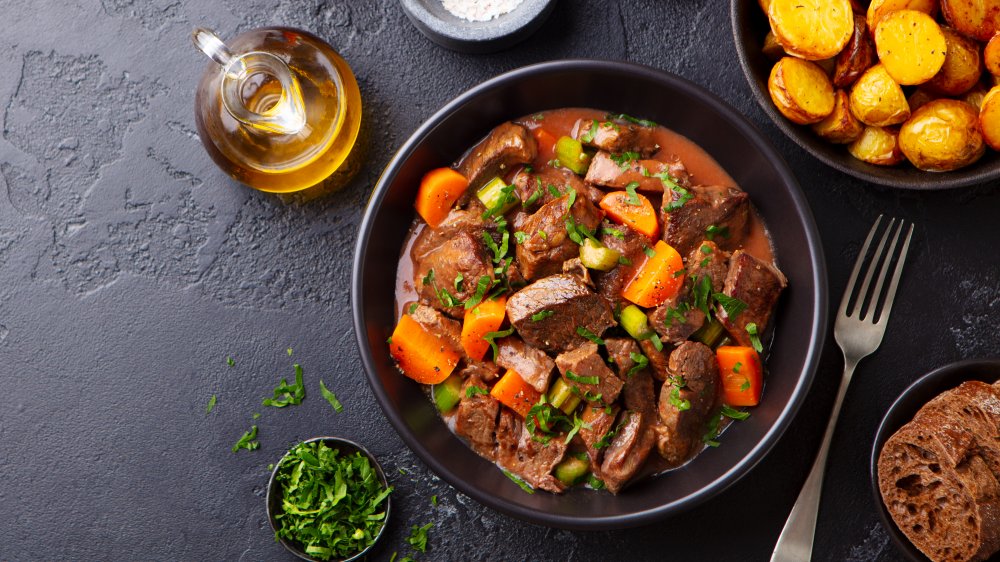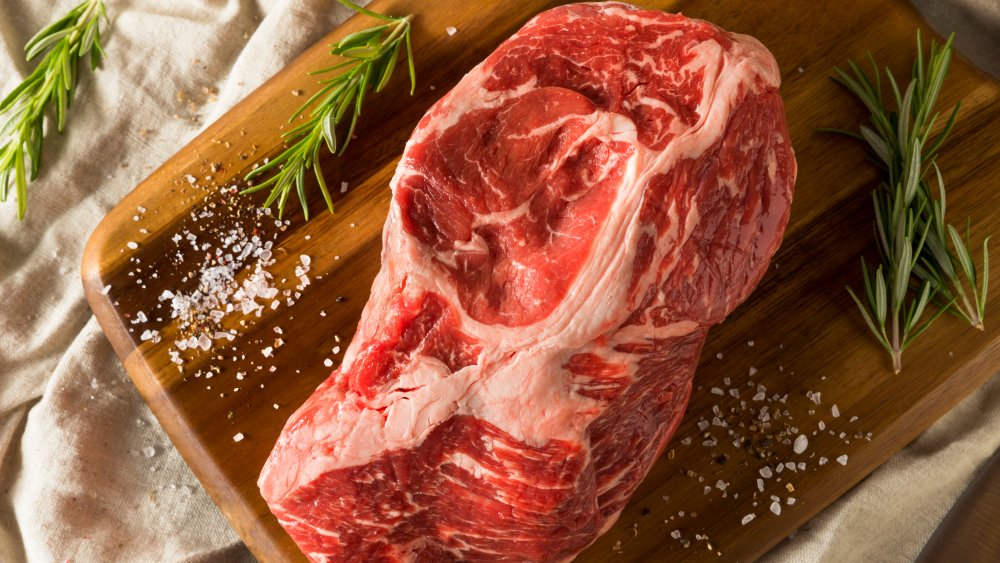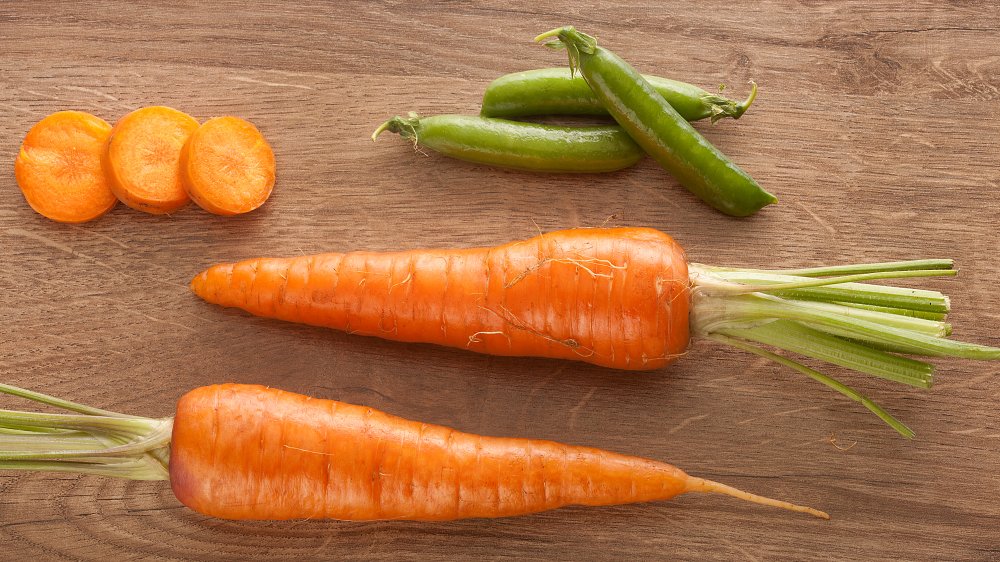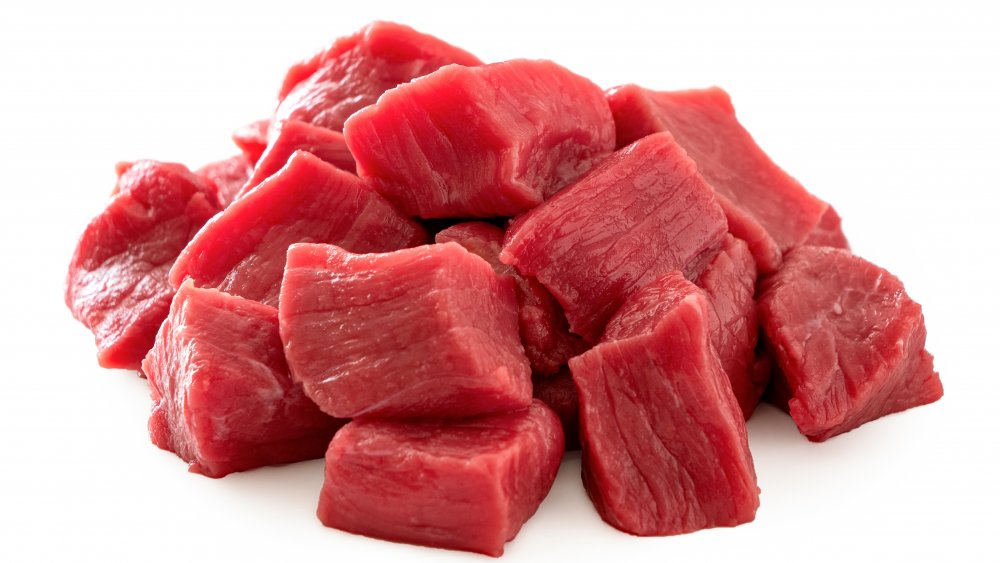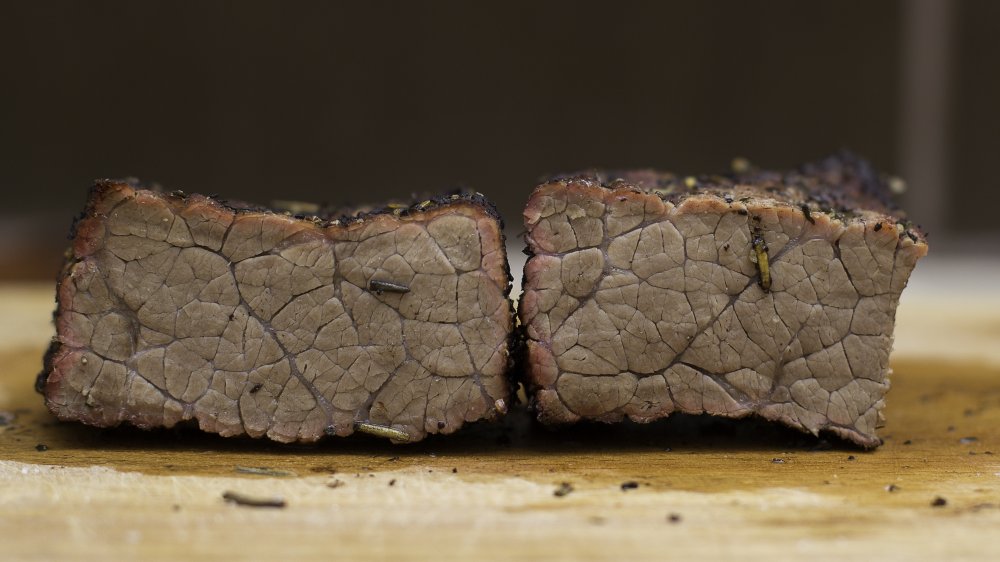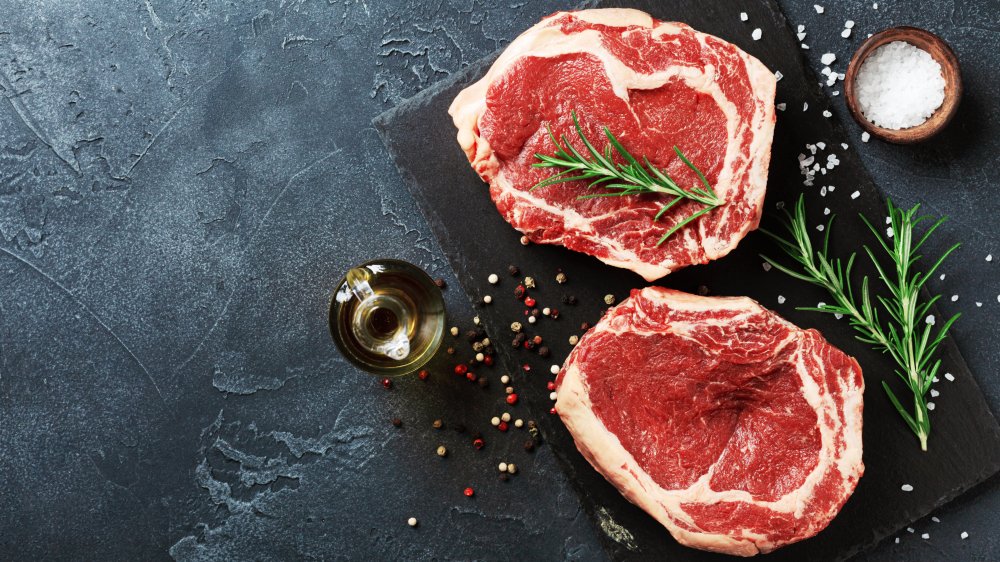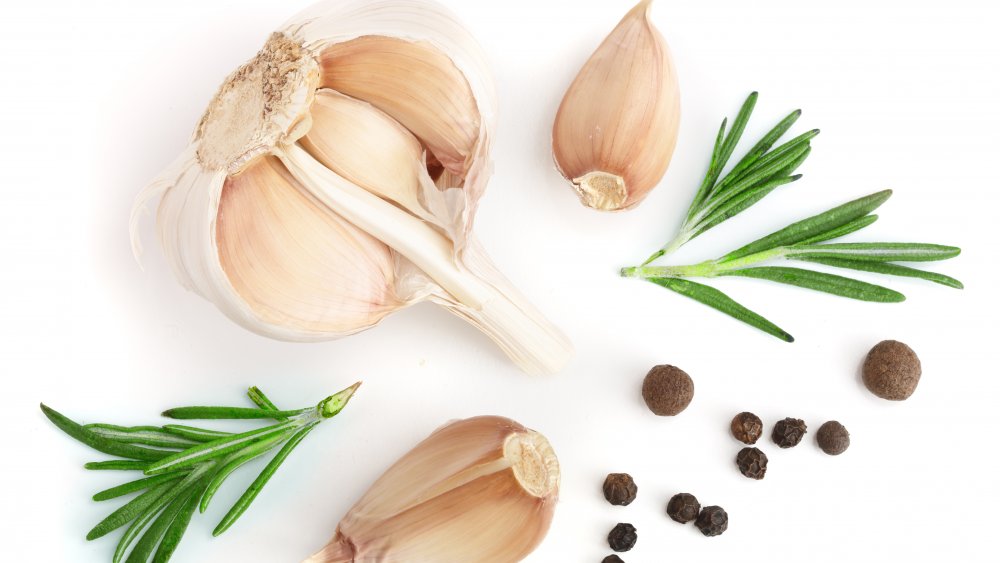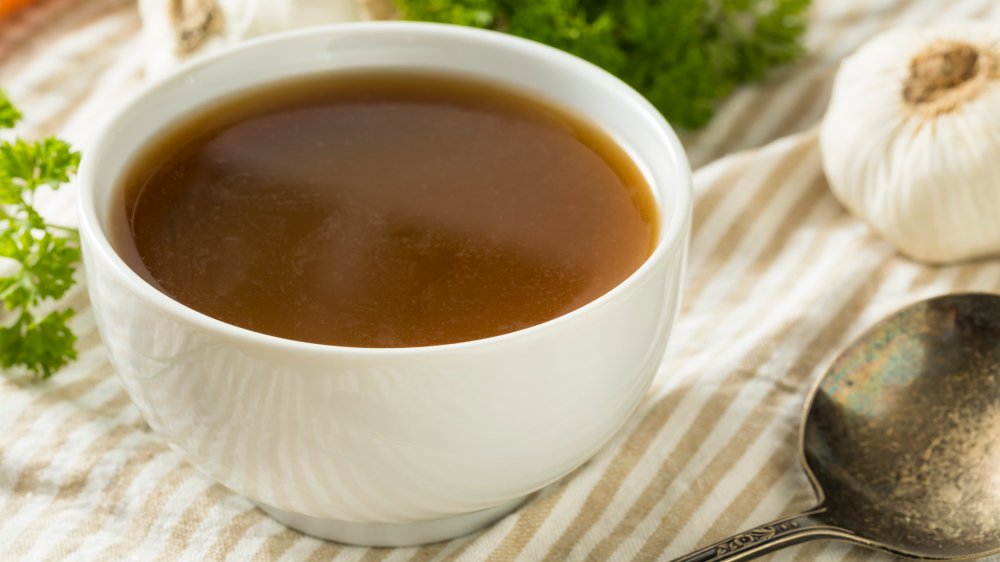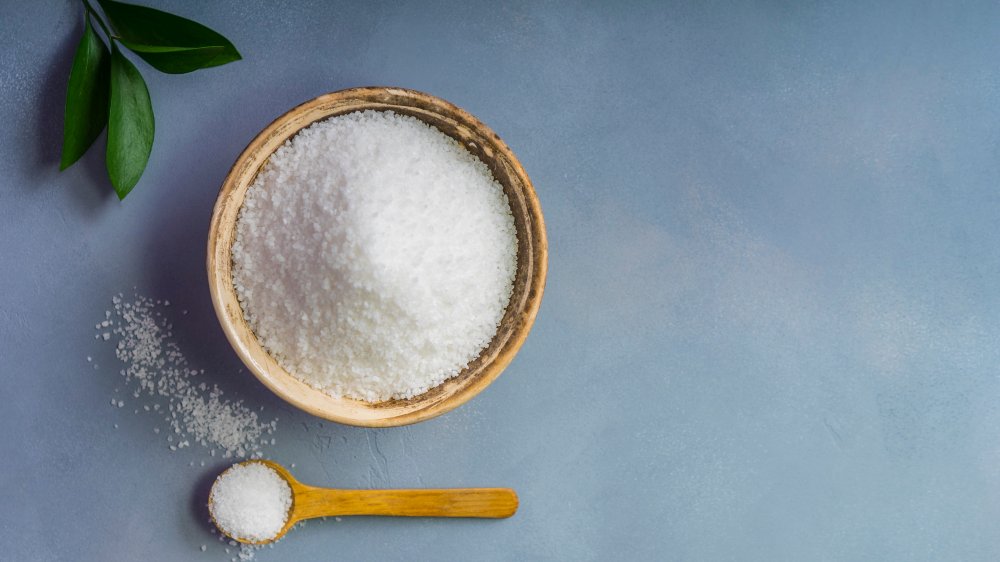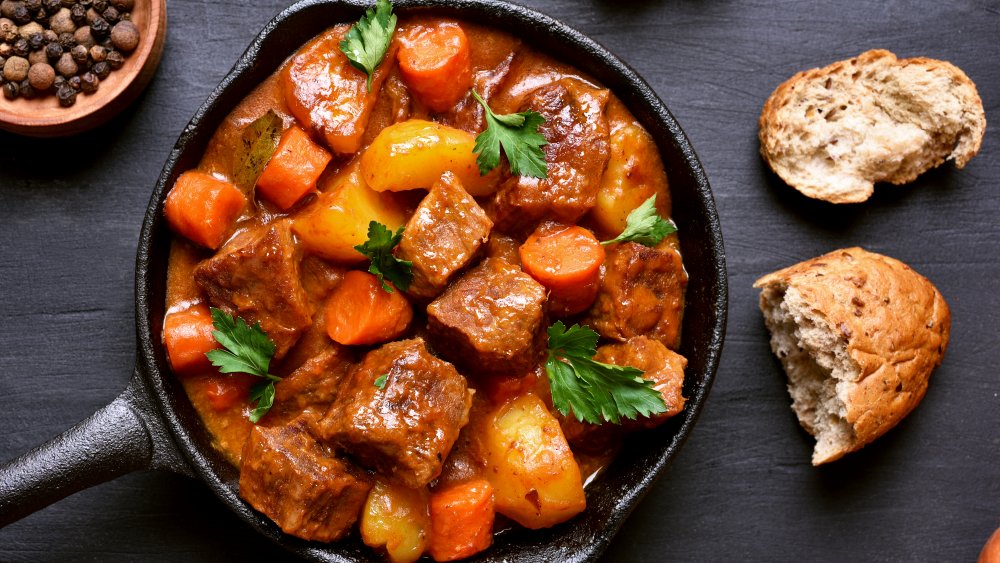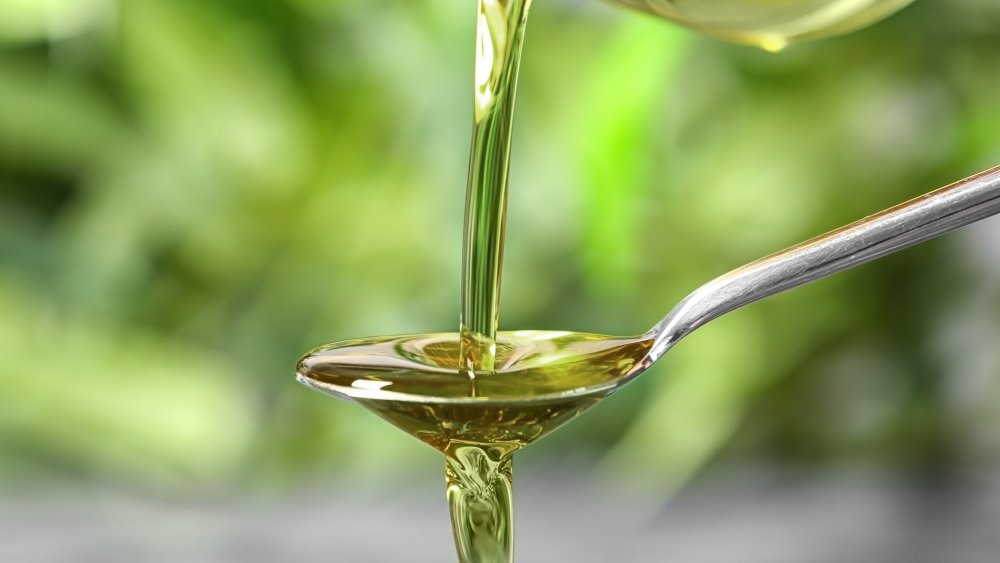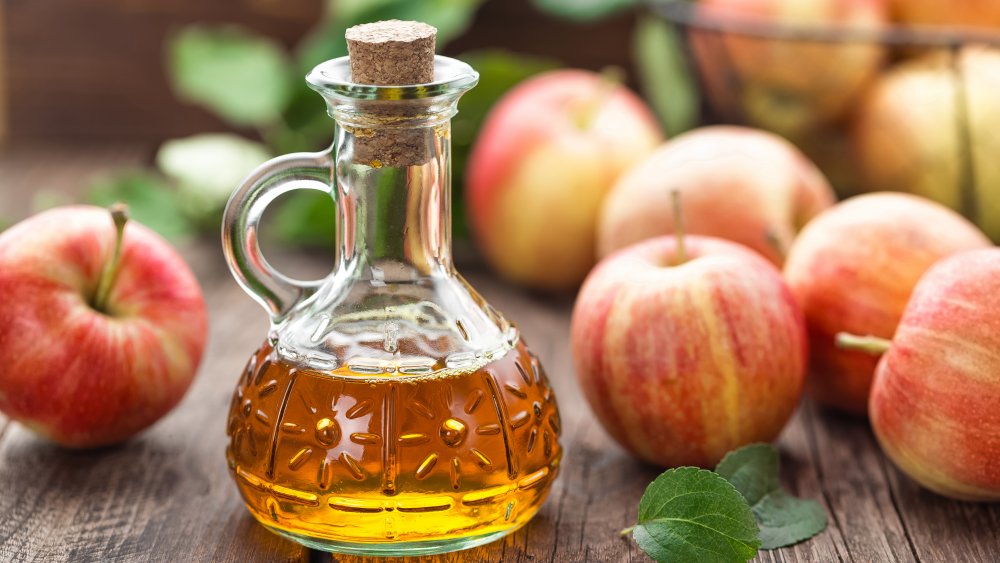How to Tell if Beef for Stew Is Good
Mistakes Anybody Makes When Cooking Beefiness Stew
There are some comfort foods that are so ubiquitous, nearly of us don't even requite a second thought to the finer details of how they're fabricated. We're talking about those staples similar chicken pot pie, baked ham, and spaghetti and meatballs that we've made a million times and never really questioned. Only what if it turned out that in that location are some mistakes you've been making with one of your favorite condolement food dishes for years? When information technology comes to beefiness stew, in that location are actually a lot of lilliputian details you need to pay attention to if you want your dish to be a hit, not a thwarting.
If yous're not paying attention, your stew tin can come up out a mess: tough meat, banal broth, a gloppy texture, vegetables that accept been cooked until they're total mush. Luckily, rectifying these mistakes doesn't take a lot of piece of work. Yous can churn out tureens of stew that are worthy of serving visitor by making a few tweaks to your standard recipe. Major things to pay attention to? The cut of meat you utilise, the consistency of your broth, and the types of seasonings you include in the mix, for starters.
Read near some of the common mistakes you're probably making with your beefiness stew, and the next time you go far, your gustatory modality buds will thanks.
You use the wrong cut of meat for beef stew
While a well-marbled ribeye steak or a luxurious filet mignon might catch your eye at the supermarket, if you lot're making beef stew, y'all should pass these prized cuts correct on past. That's because those tender steaks would be wasted by a slow braise or simmer. Filet mignon is besides lean and tender to benefit from wearisome cooking, and if you attempt to braise a rib eye, all of that luscious fat will render right out of it, leaving you with shriveled up pieces of dry beefiness you'll want to pick out of your bowl.
Instead, you should look for a heartier, tougher cut of beef. Yous want meat that has a lot of collagen-rich connective tissue, which will break downwards over the low and wearisome cooking period, leading to chunks of beef that are unctuous, tender, and flavorful, not dry and tough.
Turn to cuts like chuck roast (the front shoulder) or a round roast (from the rear). Both of these meats are tough and chewy if yous cook them up quickly, but cook them slowly and the collagen and fat within melts and tenderizes the protein, while also adding lots of season and body to the goop of your stew. An added benefit? These cuts are usually much cheaper per pound than the fancier steaks on the market.
Yous cook your veggies for also long for beef stew
Many of us turn to beef stew when we want to brand an easy, low-stress repast that can exist made in one pot, just you shouldn't be too condescending virtually how you get together your stew. There's a lot more that goes into a proper beefiness stew than simply meat and broth. Yous need to add vegetables. They add together a balance of season, from earthy potatoes to sweet carrots and fragrant onions, and they too assist add torso to the broth of your stew. But you can't just throw them in the pot and assume everything will cook up perfectly.
That's because the meat you employ in your beefiness stew needs to cook for a lot longer than your vegetables before they become tender. If you add the veggies at the same time equally the meat, by the time the beef is ready your carrots and potatoes will have turned to mush — we don't even want to think nigh the country of the peas.
Instead, you should prepare the meat for your stew and start the braising process. And so, well-nigh 45 minutes before the meat is done cooking, add together your chopped veggies to the pot. This will give them just plenty time to cook through until tender, without turning them into a pile of mush.
Yous don't sear your beefiness stew meat
It'due south definitely tempting to throw all of your beef stew ingredients into the pot all at one time and to start cooking right away — and many recipes tell you to do just that (we're looking at you, boring cooker recipes). Only if you lot merely fix and forget your stew, you lot're missing out on a lot of flavour.
To add a depth of savory, meaty season to your beefiness stew, you should always sear your meat before you lot start the braising process.
If you're using a pan on the stove tiptop or using a dutch oven, yous can dark-brown your beef right in the pot. Add the cubed, seasoned meat in batches to a pot over medium loftier heat (you don't desire information technology to overcrowd, or it will steam instead of browning), letting it caramelize on the outside but not cooking information technology through. Remove the seared beef and repeat until all of it is finished.
The caramelization process adds extra depth of flavor to your stew, and the brownish $.25 at the lesser of your pan can exist scraped upwards with a wooden spoon when you add the broth, which will infuse the liquid with even more than rich flavor.
If you're using a slow cooker, information technology'due south still worth it to sear your meat before calculation it to the pot — and don't forget to deglaze the pan you used to sear the beef, adding the prized liquid to the dull cooker too earlier continuing on.
You overcook your beef stew meat
There'southward something romantic about letting a stew simmer away on the stove acme all mean solar day, but if yous actually allow it cook all 24-hour interval long, chances are you'll wind upwards with tough, dry, stringy meat. In that location are actually a surprising number of means to overcook the meat in your beef stew.
The first is but letting your stew go for as well long. In some ways, this is a matter of preference — exercise y'all similar your meat so tender information technology falls apart into stringy, individual muscle fibers when it's done, or do you like it tender enough to cut with a spoon simply without it falling apart into the broth? Definitely don't push your meat past the signal of stringiness, though — information technology's a short jump from there to inedible, dry out meat.
The second way to overcook your meat is to cook information technology at as well high of a temperature. If you don't leave the beef simmering at a low and slow temperature, the proteins in the meat will seize upwards and become tough, and the collagen and fat won't take time to break downwards, leaving y'all with a rubbery, inedible product. Instead, make sure you're using depression heat — you don't want your stew to always come up to a rolling boil.
Yous undercook your beef stew meat
Stew meat is supposed to be silky and tender, not like a toothsome seize with teeth of steak you might carve from a T-Bone that's straight off the grill. That means that, yep, you need to cook your meat to well done and beyond.
The key here is using a depression and tiresome method of cooking. It's hard to be patient with the mouthwatering odour of your stew filling your abode, but waiting for the collagen, connective tissues, and fats to intermission down volition result in beefiness stew with meltingly tender chunks of meat that you lot don't need a knife to cut through — in fact, yous'll know your meat is ready when it's finally tender plenty to cutting with a spoon.
For those of us who have been told time and over again that steaks should never exist cooked past medium, it tin can feel sacrilegious to intentionally melt beefiness well done. Only you have to continue in mind that it all depends on the type of meat you're cooking. Yes, a ribeye cooked until well washed volition be tough and chewy, because all of the fat will run out of it. Just a chuck roast just won't be tender until the collagen, gelatin, and connective tissues woven through the meat break down completely. Once they exercise, the muscle proteins are layered with unctuous, silky textures that continue everything moist and delicious.
You forget the aromatics for your beefiness stew
A little extra time and endeavour can have your beef stew from tasting like something that could have come out of a can — bland — to something you could imagine serving company alongside a nice bottle of red wine and some crusty bread.
The secret? You need to cook with plenty of aromatics, like onion, garlic, fresh herbs, and spices.
Sear your beefiness kickoff. Then, saute onions, garlic, carrots, and celery in the beef fat, scraping the browned bits upwards from the bottom every bit yous go. This volition layer in the flavor earlier your stew even starts simmering.
When the veggies are somewhat softened, add your spices. This manner, their flavors will infuse the oil. Yous tin can go in several directions with the spices you use — garlic powder, onion pulverisation, black pepper, smoked paprika, and dried bay leafage all piece of work well, or y'all could take things in some other direction and add cumin, coriander, star anise, and cinnamon for a more Moroccan flair. The pick is upwardly to y'all, and you shouldn't be afraid to experiment.
Finally, after adding your liquid and adding the meat dorsum to the pot, you lot tin add sturdier fresh herbs, like fresh thyme, rosemary, or bay leaf, to the simmering stew to add further flavor (just make sure to remove the woody herb stems and any bay leaves from the pot before serving).
You use salty store bought stock (or apparently water) for your beef stew
Different with a roast or a steak, where the flavour of your dish is full-bodied on the surface of the meat, in a beef stew you lot need to focus on the liquid that all of the ingredients are being cooked in if you want to make sure information technology'south infused with season.
That being said, there are some things to look out for.
Store bought stock tin can be overly salty. If you lot're already salting the rest of the ingredients as you gear up them, adding a shop bought stock can make the dish a lilliputian likewise salty. This is especially true if y'all programme on reducing your stew to thicken the broth. Equally the h2o evaporates out of the stew, the salty season will become concentrated. If you want to use a store bought stock, wait for "low sodium" or "unsalted" varieties, so you tin can adapt the seasoning to taste instead of having to rely on whatever'southward in the tin or carton.
You also shouldn't use plain water to make your beef stew. Yes, the meat and veggies will exist able to impart some flavor in the liquid, but it still won't attain its flavor potential.
If you need a substitute for beef stock, even swapping information technology for chicken, veggie, or mushroom stock is ameliorate than nothing. You tin also use plain water with bouillon cubes, paste, or powder added, though over again, yous'll need to sentinel out for the salt level.
Y'all don't cheque for seasoning earlier serving your beef stew
You added a bunch of spices and aromatics to your stew pot, along with flavorful liquids and your seared beefiness. So information technology'll probably come out of the pot tasting perfect, right? Unfortunately, that's not always the example.
Even if you call up you've packed your stew with flavor, information technology's important to taste it in one case the beefiness is done cooking, before yous've ladled information technology into bowls and rang the dinner bell. That's considering your stew might need some adjustments.
Ane of the most common things you'll need to change about your stew is the common salt content. If y'all've proceeded with caution, using a pocket-size paw with the salt and adding low-sodium stock or broth, then at that place's a chance you lot'll need to add more salt before serving.
If information technology's nigh salty enough only missing a scrap of a depth of flavor, a few drops of soy sauce, Gravy Chief, Maggi, or Worcestershire sauce might be the secret ingredient needed to set your stew over the edge. Sometimes, your stew might even call for a pinch of brown saccharide, the slight sweet calculation a hint of caramelized flavor if you lot didn't brown your meat or onions plenty before stewing, or if information technology's already salty enough and needs something to balance it out.
It's an easy footstep to skip if yous've been smelling stew all twenty-four hours and are ravenous, but adjusting the seasoning before y'all serve could save yous and your gustatory modality buds from regret.
You thicken your beefiness stew too much
When we think of a perfect beef stew, we imagine succulent bites of meat, slightly sugariness, tender vegetables, and a rich, silky broth belongings everything together.
You want a velvety, slightly thickened broth that has a lip-smacking viscosity, non one that turns to a thick paste in one case information technology starts to get cold.
Some recipes advise using flour, a cornstarch slurry, a roux, or a beurre manie to give your stew'due south goop some heft, but those starchy solutions can lead to trouble. Your beef stew shouldn't be thick and gloppy like a can of dog nutrient when information technology's done cooking, and using a heavy paw with those shortcut thickening methods can do but that. They can also tedious the season of your broth, obscuring the reach, meaty umami you worked so difficult to develop with a palate-coating blandness.
Your stew broth should naturally thicken while cooking, thanks to the release of starch from the potatoes in your stew, and also from the collagen that cooks out of the meat, adding body to the liquid.
If you really want to thicken upward your broth, you tin can try dusting your beef in flour at the very beginning of the cooking process, before you lot sear it, or you can merely permit your stew simmer without the chapeau on for a bit and so the liquid has a gamble to reduce. Both of these options tin help add torso to your stew without sacrificing flavor or texture.
You don't skim the fat from your beef stew
Choosing a well-marbled cut of meat means that your stew will have a luxurious, rich texture, thanks to the collagen, gelatin, and beefiness fat that renders out equally your stew cooks at a low and tiresome temperature. But it can also mean that when your stew is done cooking, there's a thick sheen of fat floating on top, which is not exactly appetizing.
That extra fat can glaze your palate when you accept your outset spoonful of stew, dulling the flavors that you worked then hard to develop.
That's why, once your stew is cooked, y'all should apply a spoon to skim off the fat that's floating on elevation of the goop. You can likewise trim off whatsoever large pieces of fatty that are on your stew beef before you sear and cook it, so that it never ends upward swamping your stew in the offset place.
If you want to make the process even easier, you tin pop your stew in the refrigerator. The fat will rising to the height and congeal. Then, you can scrape the firm layer of fat from the elevation of your pot. When you reheat the stew, that extra fat will be gone, letting the meaty richness of the broth smoothen through.
You don't add acid to your beef stew
There'southward one matter that a lot of condolement foods have in common: they're heavy. Rich meats, thick broths and gravies, sides of bread, rolls, and biscuits — they can weigh down your palate.
The solution? Y'all need to add a footling acid to your dish.
This is true even with beef stew. You might initially shudder at the thought of adding a sour, tangy element to your stew, but if you use a discerning paw, the consequence is subtle and highlights the other flavors in your pot.
There are a few unlike ways you can add acid to your beef stew. Add diced tomatoes, tomato paste, or some red vino into the pot at the beginning of cooking. As the stew simmers the harsh acerbity will be toned downwardly, until yous're left with merely a kick at the terminate of cooking, which volition liven up the flavor and add some brightness to the dish.
Alternatively, you tin can add a splash of vinegar at the end of cooking if y'all taste your stew and realize information technology still needs that piffling extra something. A splash of apple tree cider vinegar tin can add together acrid without changing the flavor of your stew as well much, only if yous think your broth could utilize a little sweetness, y'all can try balsamic vinegar every bit well. Just steer clear of obviously white vinegar — yous don't desire to overwhelm the rest of the flavors in your stew with a vinegar flavor that'southward too harsh.
steinbergcoluseld.blogspot.com
Source: https://www.mashed.com/209508/mistakes-everyone-makes-when-cooking-beef-stew/
